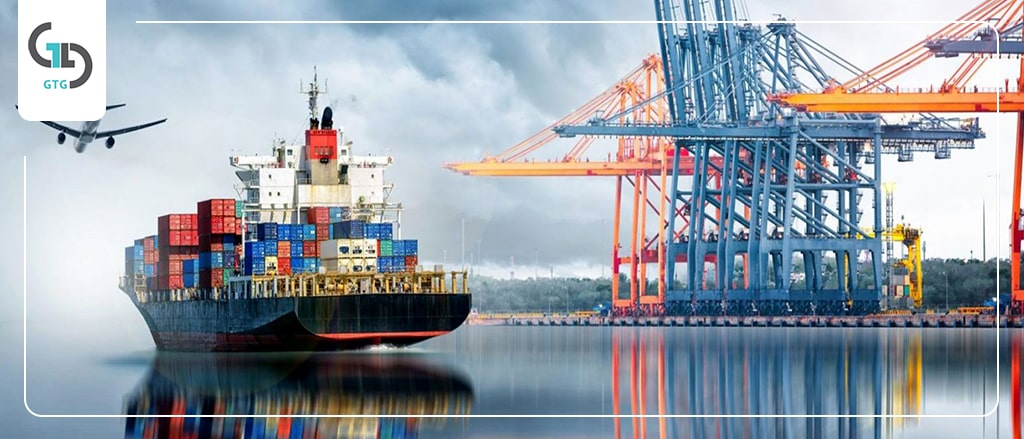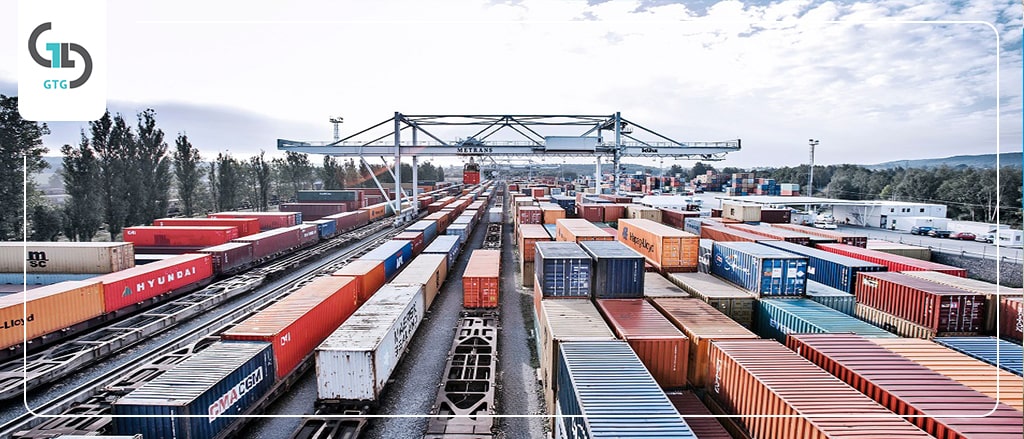

There are some documents in International transportation and commerce that include the properties and characteristics of the freight and are known as transport documents. The transport documents are the main documents when trading with foreign parties and they are considered as the ID card of the goods. When buying some good, transport documents are very important because the buyer can only perform the customs formalities and discharge the goods from customs, after providing the financial commitments and settling the payment they are to make to the seller or bank, by providing transport documents. In this paper, we will familiarize you with transport documents and also inform you of different types of these documents.

The bill of lading and consignment note are two of the main transport documents and they are the only valuable papers connected with goods and they include some terminology of transportation in the trade that bear some similarities to and differences with each other. The bill of lading is a document indicating the signing contract of carriage that is issued by the carrying party after receiving the goods to carry from one point (origin) to another point (destination) with a particular vehicle (like a ship, train, truck, airplane or hybrid) agreed by both parties, and in exchange for some particular as stipulated in the contract.
Transport classification
Transport documents are divided into types, namely conventional and special documents:
The conventional transport documents are:
- Bill of lading
- Proforma invoice
- Commercial invoice
- Certificate of origin
- Packing list
- Detail packing list
- Test report or inspection certificate
- Insurance policy
- Export certificate
Special transport documents
Some goods have some particular characteristics that entail having some further documents as well the ordinary documents.
Transport documents are:
* Certified invoice
* Legalized invoice
* Weight certificate
* Consular invoice
* Manufacturer analysis certificate or manufacturer declaration
* Black list certificate
* Health veterinary & Sanitary certificate
* Fumigation certificate
The inspection certificate at the origin like COI
If there is a defect or lack of confirmation in any of these types of documents, this will lead to non-payment to the seller and non-clearance of the goods, thus the goods will not be received by the buyer.
Bill of lading

Generally, a bill of lading is one of the transport documents that is issued by the transporting company or the agent carrying the good after receiving the goods to be carried.
Bill of lading includes four important legal characteristics:
- It indicates the conclusion of a contract of carriage
- On-board bill of lading indicates the loading of goods by the vehicle
- The bill of lading is a document of title to goods and the party holding it is considered the owner of the goods.
- The bill of lading is transferable and endorsable
There are different types of bills of landing:
- Sea-way bill of lading
- Airway bill
- Roadway bill
- Roadway consignment note
- Letter post receipt
A. Sea-way bill of lading
The marine transport company issues a sea-way bill of lading at the time of receiving the goods. The information included in the bill of lading includes the ports and countries of origin and destination, name of the ship, transport date and travel code, incoterms and the conditions of carriage and also the characteristics of the load like goods description, weight, volume, type of good, number of packages, container number, type of container, number of containers, international good tariff, Performa number, particulars of the carrying company and its representative in the destination company, particulars of both seller and buyer of the goods and finally the bill of lading number.

The sea-way bill of lading is usually issued in multiple copies. The question that may occur to you is that “Why is the bill of lading issued in several copies?”
It is issued in several copies because in case one of the copies is lost, the owner of the good can still receive the goods they own from the shipping company by providing another copy. Also, the transacting bank usually mails the transport documents in two separate groups so that if the first group is lost, they can provide the second group to the opening bank so that the bank can examine the transport documents and provide them to the buyer to receive the goods.
The items to be mentioned in the sea-way bill of lading are:
- Name and address of the shipper
- Name and address of the consignee
- Name of port of loading
- Name of port of discharge
- Name of ocean vessel
- Description of goods
- Number of packages, weight, and volume of the packages to be carried
- The goods have been loaded in the hold and this has been shown by using the word on-board.
- Whether the freight is to be paid at the origin or destination
- Date of the bill of lading: If the documentary letter of credit provided to the interacting bank is the transport documents issued after 21 days from the carriage date, this type of bill of lading is considered to be stable, and the transacting bank refuses to accept it according to article 43 of Uniform Customs and Practice for Documentary Credits (UCP) (brochure of 500 International Chamber of Commerce) unless it has been explicitly mentioned that a further date will be valid.
- It is advisable to use the word shipped in the bill of lading which indicates that the goods for which the bill of lading is issued are on the way, and if some phrase like since shipped or received for shipment are mentioned, the banks must refuse to accept such bill of lading when dealing with documentary letter of credit.
- Some section in the bill of lading is allocated to the name of the person or institution that is to be informed as the goods are arriving at the destination, and this is determined by the phrase notify party.
- If the goods are carried on deck, this must be mentioned in the bill of lading.
- Groupage bill of lading
The forwarders can package the goods shipped by different sellers to the same destination in the same group, and ship them as a single freight. The owner of the ship can issue a groupage bill of lading in such cases.
The advantages of shipping goods as a group:
- Saving packaging costs by reducing the number of packages
- Quick transfer
- Lower risk of robbery
- Lower risk of damage to the goods
- Lower costs
2- Short form B/L
Many conditions have been mentioned in a traditional marine Short form B/L through small letters that complicate the transactions using these bills of lading. In 1979, the International Association for Simplification of International Trade Procedures introduced a new form named Short form B/L to be used in place of the ordinary bills of lading.
3. Liner B/L
These types of bills of ladings are issued by the shipping companies that are frequent on regular routes. In other words, these ships enter or leave some particular ports under some pre-planned programs at certain times.
4- Non-negotiable sea-way B/L
The non-negotiable bill of lading is not the same as the document of title to the goods. The goods mentioned in this type of bill of lading are only delivered to the person who has been mentioned in the bill of lading as the party entitled to receive the goods.
5- Through bill of lading
The through bill of lading is used for transportation that is performed by several vehicles; however, the through bill must be issued by the shipping company or its representative.
6. Mate’s receipt
This receipt is usually issued by the chief mate the sea bill of lading is issued on the last day after loading for receiving these receipts, and it is signed by the ship captain or the representative of the shipping company and then it is delivered to the seller or deliverer of the goods.
7. Container bill of lading
Nowadays, containers play an important role in international transportation. This type of bill of lading covers the overland carriage of goods from the origin to the destination port or from the origin warehouse to the final destination in the buyer’s country.
8. Third-party bill of lading
In international trade, sometimes the seller alone cannot provide all the goods that they have been committed to export. In this case, it delegates the responsibility to provide the goods to another party. This is the case where the third-party bill of lading is used.
9. Charter party B/L
When a ship is hired by a person or company to carry the goods. The issued bill of lading is called the charter party B/L. The banks accept this bill of lading if this has been explicitly authorized according to the terms of financing.
B. Airway bill

The airway bill is usually issued in 12 copies, where 3 original copies are commercially important, and the rest of the copies are used for the internal sections of an airline.
There are three original copies:
- The first copy is issued for the carrier company
- The second copy is issued for the consignee
- The third copy is issued for the shipper
The shipper can refer to the airline and ask the airline to change the name and address of the recipient or take back the goods after delivering the goods to the airline and receiving the third copy of the bill of lading as long as the shipper does not deliver it to the recipient bank.
The airway bill of lading is considered important for the following reasons:
- As a receipt of the goods to be carried
- Determining the carriage contract
- Freight bill (this freight is payable according to the contract either in the point of origin or destination which is determined in the airway bill of lading)
- The instructions of carriage by the shipment officials.
- Certificate of insurance, if the carriage insurance is demanded by the party shipping the goods.
C. consignment note (bill of lading) truck (CMR)
The truck consignment note is a non-negotiable document that is used to carry goods with trucks. This carriage document determines the limits of liability of those in charge of road transportation, and they are usually issued in 6 to 14 copies where 3 of which are considered the original copy and are signed by the exporting party, carrier, and recipient. The rest of the copies are used for customs entrance and exit of the countries between the points of origin and destination.
The information included in the consignment note of trucks are:
- Name and address of the shipping party or its broker
- Name and address of goods carrier company
- Name and address of the recipient of goods
- Date of issuance and carriage
- Date and place of loading at the origin and also the date and place of destination delivery
- Gross and net weight of freight
- Costs of carriage to the customs etc.
- Particulars of the goods in terms of dimensions, type of packaging, type of goods, number of goods, and the signs on them
- Mention of the fact that if it is allowed to transfer the goods from one truck to another.
- Attached transport document
- Railway consignment note (bill of lading)

The railway consignment note is a document that is issued by the railway companies in loading stations where any given railway company declares that it has taken delivery of the goods mentioned in the consignment note and it has undertaken to deliver the mentioned goods sound and safe in the destination point. A railway consignment note is one of the nonnegotiable documents, thus it is not possible to transfer it to another party by endorsement.
The following information must be included in the railway consignment notes:
- Name and address of the shipping party
- Name of the station of origin and goods destination
- Name and address of goods recipient
- Determination of the type of goods and their characteristics like a tariff, dimensions, etc.
- Goods weight, number of packages, and package specifications
- Number of wagons
- Mention of the required details for the customs
- The freight is usually based on any given railway company tariff, and it is calculated according to the goods weight, unit price, relevant tariff, and the exchange rate plus secondary costs that are to be paid in two ways, namely pre-payment and post-payment of freight.
E. Parcel post receipt
When the goods are shipped via post, the post office issues a receipt for packaged goods, and the goods are directly delivered to the recipient according to the recipient’s address.
Proforma invoice
The first exportation transaction between the buyer and seller is done at the request of the importer for the announcement of price or proforma invoice. Then, the exporter announces the price to the importer through a proforma invoice.
The information included in the proforma invoice:
- Seller’s information including name, address, phone number, fax number, and email
- Buyer’s information including name, address, phone number, fax number, and email
- Date and number of buyer’s request
- List of the requested goods and brief explanation about them
- Goods price
- Carriage gross weight
- Volume and dimensions of goods
- Trade discount
- Point of goods delivery
- Terms of payment
- Transport and insurance costs
- Announced price validity period
- Costs to be paid by the customer
- Approximate carriage date from the company to the given port to be shipped
- Approximate date when the goods reach the destination
Proforma invoice emphasizes the accuracy of the information on goods origin. The prices announced in the proforma invoice can usually change without any notice unless agreed otherwise between seller and buyer. Also, the seal and signature of the proforma of the seller and buyer convert it into an international contract.
A commercial invoice
The commercial invoice is one of the transport documents required by the customs that should be provided to the customs by the buyer. This document contains the real value of the imported goods and it is used to evaluate the rights, duties, or customs duties. This document also shows the transfer of ownership from the seller to the buyer and also the payment coordination.
The information mentioned in the commercial invoice includes:
- Seller’s name and address
- Buyer’s name and address
- Exact goods description (type, grade, quality, weight)
- The goods price agreed by both parties (price unit, total price)
- Packaging description (this item is in the packing list and it is not in the invoice)
- Port of goods shipment
- Payment terms
- Date and location of the shipment
- Transportation method
- Seller’s seal and signature
Certificate of origin
This transport document mentions the country where the goods subject to trade contracts are produced and even where they are transacted. If the exporting country is different from the producing country, the certificate of final origin is issued by the beneficiary country because this is included in the buyers’ announcements and also in the final evaluation of sellers’ suggestions and plays an important role in the final decision.
This document usually includes some information such as:
- Seller’s particulars
- Buyer’s particulars
- Carriage details and method
- Goods description
- The place where the good is produced
- The number of goods
- Goods mark
Packing list
This document shows the specifications of the goods of the packaged goods and determines the number, weight, dimensions, and contents of each package. The good’s price is not included in this document.
This document can be used at least in two following ways:
- When examining the contents of the trunks or cartoons, the officials and assessors need it.
- The warehousemen use this document to issue a receipt and to examine goods that enter customs both qualitatively and quantitatively.
This transport document usually includes the following information:
- Seller’s particulars
- Buyer’s particulars
- Place of loading
- Place of unloading
- Type of packaging
- Dimensions of total freight
- Date
- Receipt number
Certificate of inspection
This certificate is issued by the inspecting companies or the buyer’s representative to make sure of the accuracy of the quality and quantity of the bought goods, brand new goods, the origin of good production, size and dimensions of goods, proper packaging of goods both retailing and wholesaling, proper marking on packages, proper loading and unloading, selection of proper transporter vehicle, etc. and the delivery time in the producing country or the customs or in the unloading port in the buying country.
Certificate of insurance
If the seller undertakes to insure the freight, the certificate of insurance must specify the type and extent of insurance coverage that is negotiable.
Export certificate

In some countries, there is no need to export certificates for exports and complete the export statements. The exporter must be informed if they need a particular permit to export goods or not to be able to do the requirements of exportation laws.
This discretion is based on three following factors:
- The type of goods that is to be exported: exportation of some goods has been limited or prohibited due to some reasons including national security, foreign policies, shortage of production.
- Destination point of goods: in terms of political relations between the countries, it is prohibited to export to some countries, or exporters are required to provide a certain permit to do so.
- Cases where the use of goods can affect the exportation of goods.

Conclusion
In this paper, we have provided some explanation about international transport documents, different types of this document, and also the information included in each one of different types of this document. Please contact our experts in GTGTRADE commercial company to examine and obtain your transport document.

